Want to stay organized and achieve your goals? A personalized planner can help you do just that. Here’s how:
Quick Comparison Table:
| Planner Format | Key Features | Best For |
|---|---|---|
| Hobonichi Weeks | Compact, weekly view | Minimalists, on-the-go planners |
| Erin Condren | Customizable, colorful layouts | Visual thinkers, creative organizers |
| Bullet Journal | Blank pages for full flexibility | Creative minds, DIY planners |
Start by identifying your planning style and goals, then tailor your planner to fit your life. Regular reviews ensure it evolves with your needs.
Before diving into customization, it’s important to figure out exactly what you want from your planner. Knowing your planning style and needs will help you build a system that works for your daily life.
The first step in customization is understanding how your planner can reflect your goals and lifestyle. Break down your tasks by urgency and importance to pinpoint its main focus.
Here are some common purposes and features to consider:
| Purpose | Features and Best Uses |
|---|---|
| Task Management | Hourly schedules and checklists for managing daily tasks and deadlines |
| Goal Setting | Monthly overviews and trackers to monitor long-term objectives |
| Life Organization | Sections and color coding to combine work and personal planning |
| Creative Projects | Blank pages and sketch areas for brainstorming and creative work |
Once you’ve nailed down the purpose, the next step is choosing a layout that supports those goals.
Your daily routine plays a big role in determining the best layout. For example, someone juggling back-to-back appointments will need a different setup than someone focused on long-term projects.
To find the right layout, think about:
A helpful tip: Track your planning habits for a week. Pay attention to how you currently organize your tasks and where your system might fall short. This will give you insight into what features you need most.
Here’s how to make your planner fit your workflow, goals, and personal style.
The Hobonichi Weeks planner is a great example of a compact option with a flexible weekly layout. It provides structure for your tasks while leaving space for creativity [2].
Here are a few layout ideas based on different planning needs:
| Planning Need | Layout Solution | Best For |
|---|---|---|
| Daily Details | Hourly Timeline + Task List | Busy schedules with appointments |
| Project Focus | Weekly Overview + Project Tracker | Managing long-term projects |
| Life Balance | Split Layout (Work/Personal) | Juggling multiple roles |
| Goal Setting | Monthly View + Progress Tracker | Strategic planning |
Adding visual elements can make your planner both functional and motivating. Dark Moon Paper, a well-known sticker brand, offers themed sticker kits like ‘Lilac Dusk’ and ‘Winter Hygge,’ which can turn plain pages into inspiring spaces.
Here are some ways to enhance your planner without overloading it:
These small touches can make your planner more visually appealing and help you stay on track.
The Codex Standard Mega planner shows how blank pages can be turned into tailored tools for various needs [4].
Here are a few ideas for custom pages:
To make your planner a dependable tool, build consistent planning habits. Dedicate 10 minutes each morning to update tasks and set priorities for the day [1].
Here’s a simple breakdown of planning timeframes:
| Time Frame | Focus | Duration |
|---|---|---|
| Daily Check-in | Tasks and priorities | 10 minutes |
| Weekly Review | Progress review, next week | 30 minutes |
| Monthly Reset | Evaluate goals, make changes | 60 minutes |
Once you’ve established a routine, consider using trackers to visualize progress and stay motivated.
Focus on tracking 2-3 areas that align with your current goals. Here are some tracker ideas to keep you organized:
| Tracker Type | Purpose | Update Frequency |
|---|---|---|
| Habit Formation | Build daily routines | Daily |
| Goal Progress | Monitor milestones | Weekly |
| Productivity Metrics | Track task completion | Weekly |
The key to effective tracking is combining it with regular reviews to refine your approach.
Make time for a monthly review to see what’s working and tweak your system as needed [3]. During this review, focus on:
You can also explore hybrid options like Google Calendar for recurring tasks. Regular adjustments ensure your planner evolves with your goals and routines.
Designing your ideal planner is all about finding what fits your life best. Even simple tools can become incredibly effective with the right adjustments. The key is to create a system that supports your daily tasks – whether that’s managing work projects, organizing family schedules, or reaching personal milestones.
Start with a clear goal in mind and a basic structure. From there, build on it as you figure out what works for you. Try out different layouts and tools, and focus on what naturally fits into your daily routine. This way, every part of your planner will serve a clear purpose.
As your needs evolve, your planner should evolve too. Regularly using and reviewing it will help you figure out what works and what might need tweaking. The aim isn’t to create something perfect but to develop a practical tool that keeps you organized and productive.
Customization doesn’t end – it’s an ongoing process. Your journey to building the right planner begins with choosing a format that matches your style and needs. Start today, and create a planner that helps you stay on track and achieve your goals.
Stickers Made for Planning
Our custom stickers are a fuss-free way to brighten up your planner pages with perfectly-sized designs that add a spark of personality to every layout.
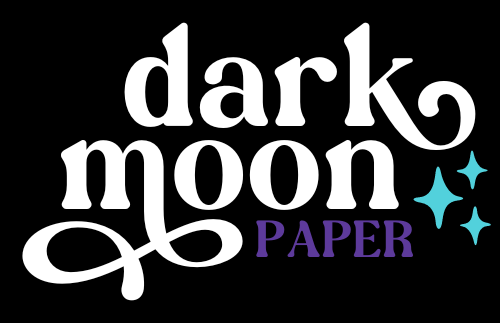
Why use planner stickers?
Planner stickers make organizing easy, fun, and personal! Add color, creativity, and structure to every page, transforming your planner into a tool that reflects you. Perfect for tracking, decorating, and staying inspired daily!
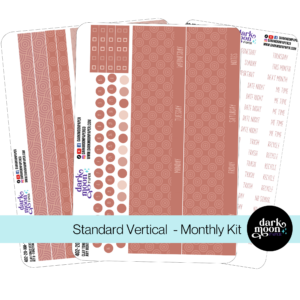
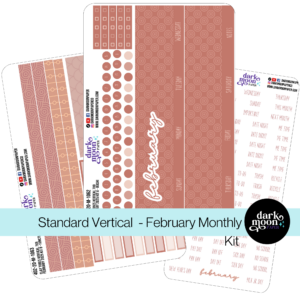
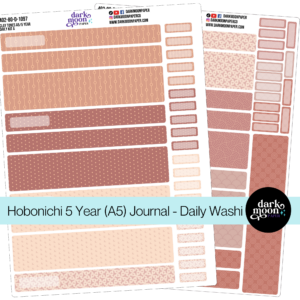
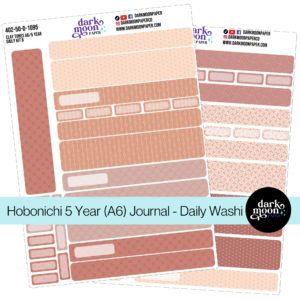
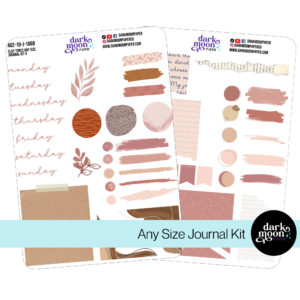
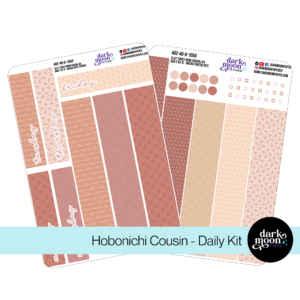

Hello and welcome!
I’m Rachael Snow, a lifelong artist and entrepreneur, and I started Dark Moon Paper to blend my love of art, technology, and the mysterious beauty of the world around us. My sticker kits are meant to set the mood, tell a story, and give you a little escape from the ordinary.
I work from my cozy studio tucked away in the beautiful woods of Oregon, surrounded by nature and a dark night sky full of stars.